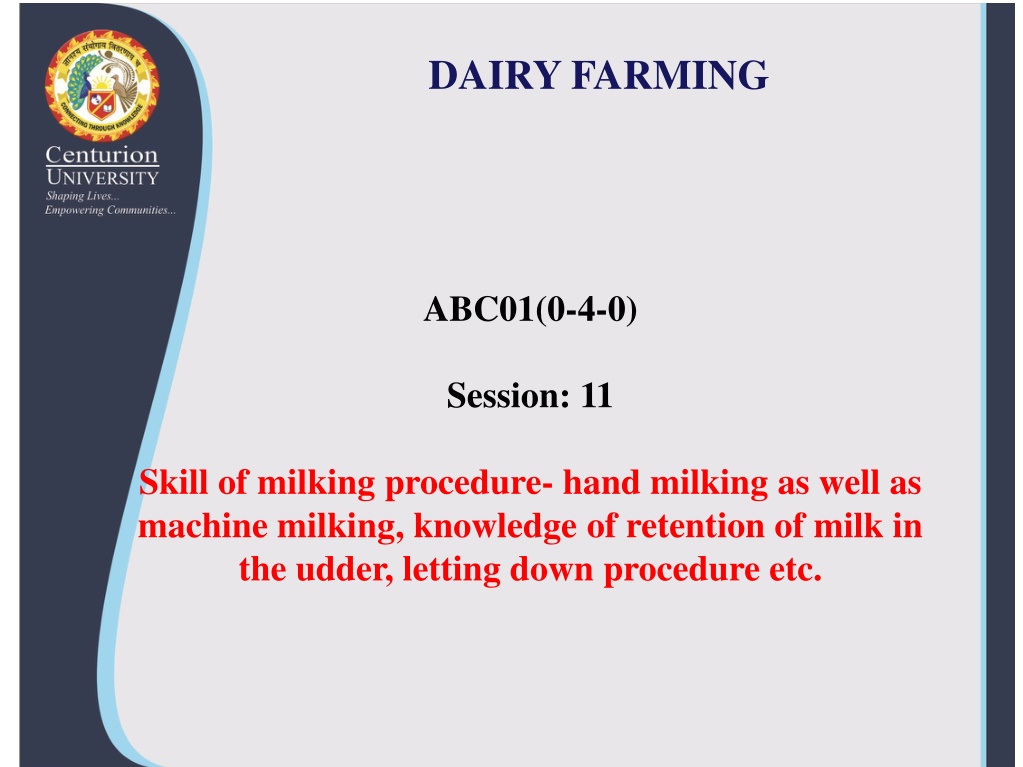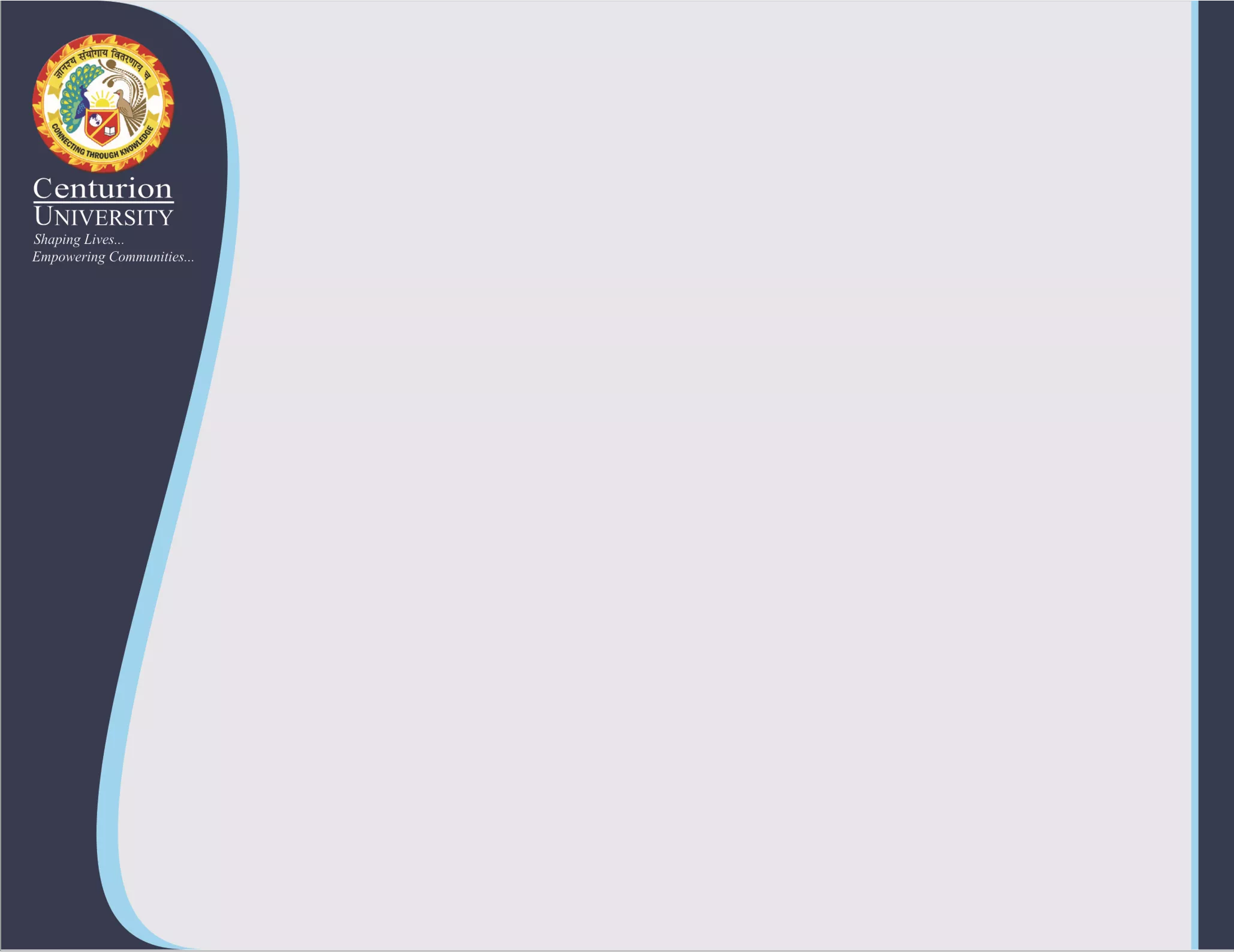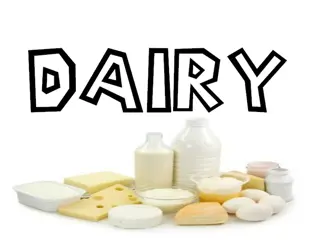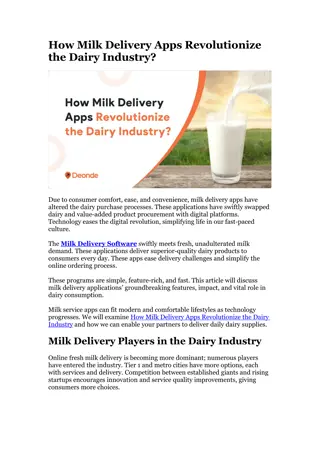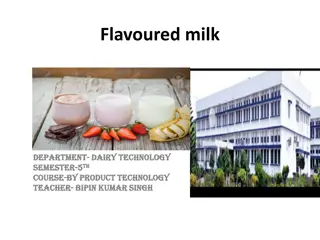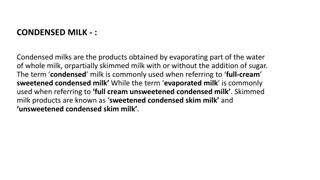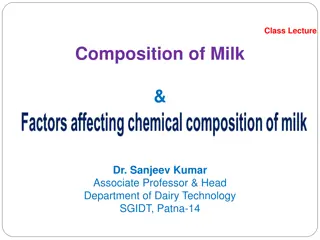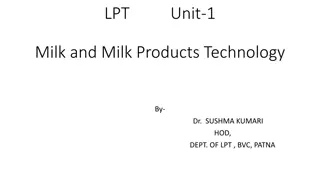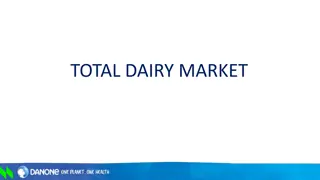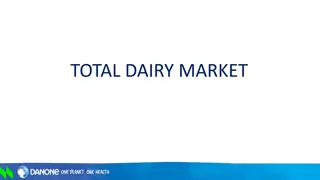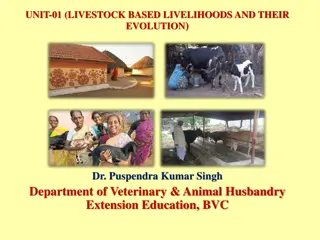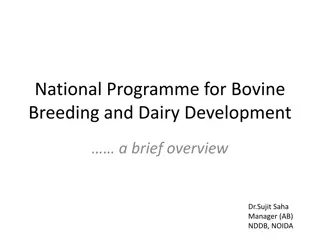Understanding Dairy Farming: Udder Anatomy and Milk Production
Exploring the external and internal anatomy of the udder in dairy cattle, including the functions of teats, streak canal, gland cistern, and supernumerary teats. Learn about milk retention, milking procedures, secretory tissue, and more crucial aspects of dairy farming.
Download Presentation

Please find below an Image/Link to download the presentation.
The content on the website is provided AS IS for your information and personal use only. It may not be sold, licensed, or shared on other websites without obtaining consent from the author. Download presentation by click this link. If you encounter any issues during the download, it is possible that the publisher has removed the file from their server.
E N D
Presentation Transcript
DAIRY FARMING ABC01(0-4-0) Session: 11 Skill of milking procedure- hand milking as well as machine milking, knowledge of retention of milk in the udder, letting down procedure etc.
ExternalAnatomy The udder consists of 4 separateglands Located in the inguinal region of the ventral aspect. Each gland has one teat Each teat has one opening The glands are covered with hair Teats do not havehair.
The right and left halves are entirely separate externally indicated by intermammary groove. The rear quarters account for 55-60% of the milk produced and 55-60% of udderweight. Rear teats are usually shorter than the frontteats.
The Teats -(papilla mammae) Functions as the only exit for the mammary secretion The only means for the calf to receive milk. Usually, only one teat drains onegland. No hair, sweat glands or sebacious glands on the teats.
Supernumerary Teats About 50% of all cows have extra teats- supernumerary teats. Some of these extra teats open into a "normal" gland, but many do not.
Streak canal (ductus papillaris) Functions as the only orifice of the gland between the internal milk secretory system and theexternal environment. The streak canal is the main barrier against infection. Lined with a skin-like epidermis. Closed by sphincter muscles around the streak canal. streak canal length increases with increasing lactation number.
The interior of the gland is made up of: Connective tissue -fibrous tissue (collagen) and fatty tissue (adipose cells). Secretory tissue -secretory epithelial cells- produce the milk. The relative amount of connective vs. secretory tissue varies from animal to animal, by stage of mammary development
Gland Cistern -(sinus lactiferus) Also called the udder cistern or milk cisternopens directly into the teatcistern. The cisterns function for milk storage (holds~100- 400 ml). The gland cistern varies greatly in size and shape. There are often pockets formed in the cistern at the end of the larger ducts. The major ductswhich empty into the gland cistern sometimes are called cisternal ducts.
Secretory tissue in the udder is organized intolobes- many lobules-lobule contains 150-220 microscopic alveoli. Alveoli -(acini) Sack-like structures where milk is synthesizedand secreted. A single layer of secretory epithelial cells lines the lumen. Contractile myoepithelial cells surround the epithelial lining.
Myoepithelial cells contract in response to the hormone oxytocin-milk being squeezed out of the alveolar lumen and into the smallducts. Outside of the myoepithelial cells the alveolusis surrounded by a connective tissue basement membrane.
The capillary bed on the outside of the alveolusis part of the stromal connective tissue between alveoli. A group of alveoli can be visualized as a clump of grapes, with the stems acting as the small ducts leading from the alveoli.
Lobules -Clusters of 150-220 alveoli are encapsulated by a connective tissue sheath and are organized as a lobule (~.7-.8 mm dia.). Lobes -Groups of lobules are surrounded by a connective tissue sheath and comprise alobe. Each mammary gland is made of numerous lobes.
Ducts -tubules by which milk drains from the alveoli down to the gland cistern. Interlobar or primary ducts drain multiple lobes. Intralobar ducts or secondary ducts are within a lobe -drain several regions of the lobe. Intercalary or tertiary ducts -small ducts whichexit from the alveolus.
A strong suspensory system required-high producers. Mammary gland is a skin gland, and is therefore external to the bodycavity.
The tissues, which provide some degree of support for the udder: Skin -minor support.. Superficial fascia or Areolar subcutaneoustissue -attaches the skin to the underlying tissues. Suspensory ligaments-main suspensory structures. Suspensory ligaments are three: 1. Superficial Lateral suspensoryligament 2. Deep Lateral suspensory ligament 3. Median suspensory ligaments
Blood supply to the mammary gland -extremely important for mammary function. All of the milk precursors come from blood. On average 400 -500 units of bloodpasses through the udder for each unit of milk synthesized Total udder blood volume for lactating cowsis about 8% of total body blood volume, non-lactating cow -about 7.4%. There is a 2-6 fold increase in blood flow in the mammary gland starting 2-3 days prepartum.
Arterial System Blood leaves the heart and flows towards therear of the cow -abdominalaorta .When it reaches the pubic area - calledthe common iliac arteries. These divide into the internal and externaliliac arteries. The external iliac artery becomes the femoral artery (supplies the leg muscles)
A branch off of the femoral artery forms the prepubic artery from which branches the posterior abdominal artery and the external pudic (or external pudental) artery. The external pudic artery passes through the inguinal canal and out of the bodycavity.
The inguinal canal -orifice in the body cavity in the inguinal region where blood vessels, lymph vessels and nerves enter and leave the body wall to supply the skin in the posterior part of theanimal. As the external pudic artery passes out of the body cavity it becomes the mammary artery. Once it enters the gland, the mammary artery then divides into the anterior (or cranial) and posterior (or caudal) mammary arteries, which then it further branches as it descends down into the gland
A small amount of blood also reaches the mammary gland by the perineal artery (from the internal iliac artery), but this only supplies the upper rear portion of gland.
VenousSystem Veins leave the mammary gland anti- parallel to the arteries. There are three veins on each side that carry blood away from the gland: 1. External pudic vein leaves the udder anti-parallel to the external pudicartery 2.Subcutaneous abdominal vein (milk vein) exits the gland at the anterior end of the front quarters and passes along the abdominal wall-large vein visible under the skin on the belly of thecow.
Nervous System Innervation of the udder is sparse comparedwith other tissues. Sensory nerves are found in the teats and skin; these are involved in the afferent pathway ofthe milk ejectionreflex. There is no parasympathetic innervation to the gland; this is similar to other skinglands. There is no innervation of the secretory system: myoepithelial cells are not innervated; they donot contract in response to direct innervation, but rather they contract in response to the blood- borne hormone, oxytocin.
The lymphatic network There is extensive lymph drainage from the teats. originates in tissue spaces as lymphatic capillaries. Lymph capillaries converge to form larger vessels. Lymph flow is undirectional from the udder through lymphatic vessels, eventually dumping lymph into the vena cava. Lymph is a clear, colorless liquid with a composition similar to bloodplasma.
Valves in the lymphatic vessels prevent retrograde flow. In the udder, the lymph system flows throughthe supramammary lymph nodes.
Mastitis Inflammation of udder due to bacterial orfungal infection. Physical and chemical composition of the milkwill be changed. In our condition one of the reasons for poor production from local cattle could be due to subclinical mastitis that go on undetected in the field.
Mammary gland abalation: Surgical removal of mammary glands as a remedy to disease process. Carried out only in pets for saving their life.
